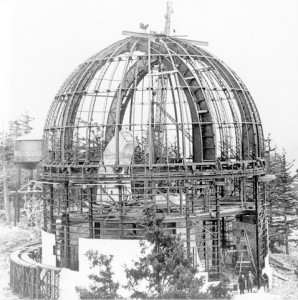By / par Sarah Gallagher, MSE Science Advisory Group Member
(Cassiopeia – Summer / été 2018)
As many readers will have heard at CASCA 2018, the MSE collaboration continues its work towards preliminary design starting in 2019. The MSE Management Group has added two institutions from the United States as observers: Texas A&M University and the National Center for Optical-Infrared Astronomy (NCOA). Including recent discussions with Texas A&M, the partnership has identified about half the resources (cash and in-kind contributions) needed for preliminary design, and are discussing possible contributions from NCOA beginning in 2019. The partnership will continue to identify and secure resources while preliminary design activities get underway.
The preliminary design phase will be governed by a Statement of Understanding (SOU) to be signed by the current MSE participants – Canada, France, Hawaii, China, Australia, and India – and endorsed by future participants when they join the project. The MSE SOU specifies the (non-binding) contributions that Canada anticipates providing during preliminary design, and the framework within which participant contributions will be converted into a "Beneficial Interest" in MSE.
As was the case in the early days of the Thirty Meter Telescope (TMT) partnership, the Association of Canadian Universities for Research in Astronomy (ACURA) has been approached to be the Canadian signatory to the MSE SOU. The ACURA Board is considering this request in recognition of MSE's strong support in the 2010 Long Range Plan and 2016 Mid-Term Review, and the significant role Canadians have played to date in developing the Detailed Science Case. Without a signatory to the MSE SOU, Canada will be downgraded to Observer status and lose voting rights on the MSE Management Group. If you support Canadian involvement in MSE during the preliminary design phase leading up to the next Long Range Plan, contact your institution's ACURA representative and let them know. A slightly dated list of representatives can be found here.
Preparation for CFI Proposal
Ultimately, maintaining a role in MSE will require that Canada make further cash and/or in-kind contributions to the preliminary design phase within the next few years. To support this aim, we are engaged in planning for a CFI proposal submission for the next round (anticipated in 2019). If you are interested in contributing to this effort, the relevant points of contact are Colin Bradley (Victoria Engineering Professor and CFI Project Manager for MSE; Enclosure), Michael Balogh (Waterloo; Low/Medium Resolution Spectrographs), Sarah Gallagher (Western; Software), and Kim Venn (Victoria; Fiber Transport System). Additional industrial partners to support these design components are also needed; sharing your connections would be greatly appreciated. The points of contact can also help develop promising leads for industrial partners.
Status of Science Team Membership
In response to the call for new science team members, the MSE Science Team now has 203 participants, including 31 Canadians from 15 institutions in six provinces. The Project Office is currently organizing team members into Science Working Groups in preparation for Design Reference Survey work that will begin within the next couple of months. If you signed up for the Science Team but have not been receiving e-mails, please contact MSE Project Scientist Alan McConnachie.
MSE Project Scientist Search
After successfully shepherding MSE through the conceptual design process, Alan McConnachie will be stepping down as Project Scientist at the end of 2018, though he will continue his involvement with the Science Team. The Canadian MSE team would like to thank Alan for his excellent leadership during his tenure as Project Scientist. He deserves significant credit for bringing the project to the stage where the external reviewers were “very impressed by the level of sophistication that the MSE project team has brought to this project”. A search for a new Project Scientist is underway.
The MSE website may be accessed here. Questions or comments about MSE governance can be directed to your MSE Management Group Members, Greg Fahlman and Pat Hall. Scientific questions or comments can be directed to your MSE Science Advisory Group Members, Sarah Gallagher and Kim Venn.













